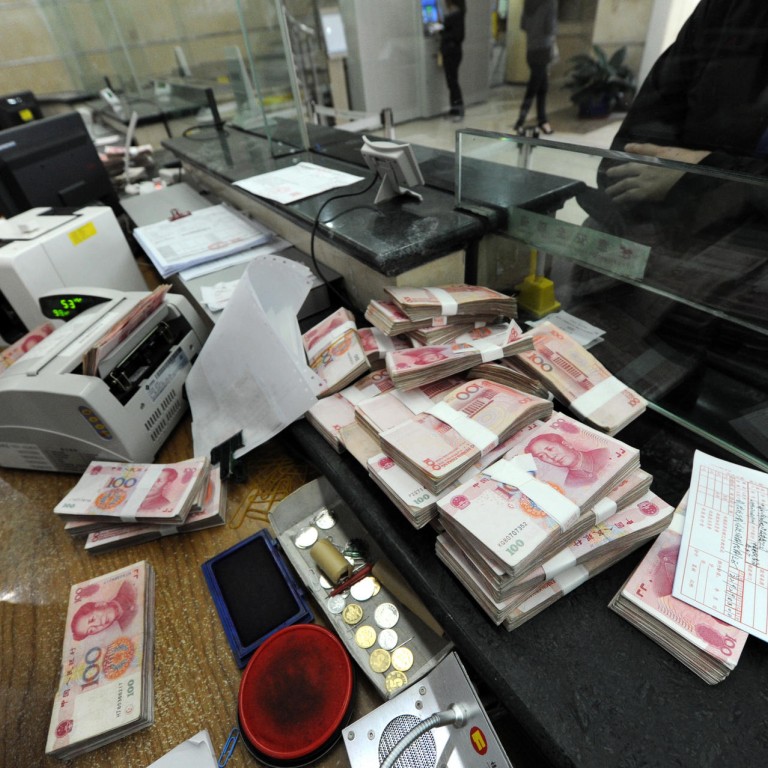
Slowing investment growth curbs China loan demand
Mainland credit growth eased last month, a sign of persistent weakness in demand from the real economy as investment growth slowed further.
Mainland credit growth eased last month, a sign of persistent weakness in demand from the real economy as investment growth slowed further.
Some economists urged policymakers to adopt more broad-based easing, such as lowering banks' reserve requirement ratios, to help lower funding costs for sectors hit hard by an economic downturn.
New loans totalled 548.3 billion yuan (HK$694 billion) last month, below market expectations of 626 billion yuan and also less than the 857.2 billion yuan extended in September, People's Bank of China data showed.
The weaker lending came even after the central bank said in its quarterly monetary policy report it had injected 769.5 billion yuan into some banks over the past two months to boost short-term liquidity.
"Loan demand has remained curbed by slowing investment growth," said Peng Xingyun, the head of the monetary theory and policy bureau under the Chinese Academy of Social Sciences. "Banks are also not so keen to offer short-term loans due to concern about financial risks."
Peng said Beijing ought to pursue more effective tools to lower funding costs, rather than relying on targeted easing to adjust short-term liquidity.
He said one option was to make a broad-based cut in reserve requirement ratios - now at a historic high of 20 per cent for large banks.
Although the central government had refrained from giving the public any impression it was interested in adopting massive stimulus, Peng said cutting reserve requirement ratios would free more funds for bank lending, reduce distortions in the lending mechanism and help promote interest rate liberalisation.
Banks have turned increasingly wary of lending to industries with excess capacity. While the National Development and Reform Commission has approved a raft of major railway and airport projects in the past months, investment has yet to pick up.
Fixed-asset investment rose 15.9 per cent year on year in the first 10 months of the year, slower than the 16.1 per cent gain in the first three quarters.
The mainland's cooling economic growth - expected by economists to hit 7.4 per cent this year, the slowest expansion since 1990 - has made it increasingly hard for companies to reap a profit.
Standard & Poor's found in a survey of 200 of the mainland's largest companies, operating across 18 industries, that "weaker revenue growth and margins have offset moderating capital expenditure".
"Many industries are also battling chronic overcapacity, low profitability and rising leverage," the ratings agency said.
Regulators have tightened control on shadow banking, causing aggregate social financing to fall to 662.7 billion yuan last month, lower than the 887.5 billion yuan expected by economists and also below the 864.5 billion yuan in October last year.
M2 money supply grew 12.6 per cent, after rising 12.9 per cent in September and 14.3 per cent in October last year.
Julian Evans-Pritchard, a China economist at Capital Economics, said the central bank's targeted approach was "consistent with its goal of keeping borrowing costs low while at the same time addressing credit risks and slowing the pace of overall credit growth".

